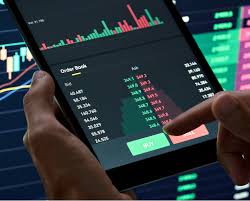
Exploring the Future of Crypto Trading Platforms
As the cryptocurrency market continues to evolve, the importance of reliable and efficient Crypto Trading Platforms https://investorshangout.com/post/view?id=2774755 becomes undeniably apparent. These platforms play a crucial role in determining how trading is conducted, how assets are managed, and how investors can interact with the digital assets they hold. Today, we delve into various aspects of crypto trading platforms, including their features, safety measures, and trends shaping their future.
What is a Crypto Trading Platform?
A cryptocurrency trading platform is a digital marketplace where individuals can buy, sell, and trade cryptocurrencies. These platforms facilitate transactions between buyers and sellers and often provide features like charts, market data, and trading tools to help users make informed decisions. Some of the most notable platforms include Binance, Coinbase, Kraken, and Bitfinex, each offering unique features and user experiences.
Key Features of Crypto Trading Platforms
When choosing a crypto trading platform, there are several features that traders should consider:
- User Interface: A simple and intuitive user interface can significantly enhance the trading experience, especially for beginners.
- Security: Given the potential for hacking and fraud, robust security measures, including two-factor authentication (2FA) and cold storage options, are essential.
- Variety of Cryptocurrencies: The best platforms offer a wide range of cryptocurrencies, allowing users to diversify their portfolios.
- Trading Tools: Advanced charting tools, technical indicators, and real-time data feeds can give traders an edge.
- Transaction Fees: Understanding the fee structure—whether it’s fixed or variable—can help traders minimize their costs.
Types of Crypto Trading Platforms
Crypto trading platforms generally fall into two categories: centralized and decentralized.

Centralized Exchanges (CEX)
Centralized exchanges are the most common type of trading platforms. They act as intermediaries between buyers and sellers, providing a secure environment for trading.
- Pros: User-friendly interface, high liquidity, and a variety of trading options.
- Cons: Higher risks of hacking and regulatory scrutiny.
Decentralized Exchanges (DEX)
Decentralized exchanges allow peer-to-peer trading without the need for a central authority. They often offer greater anonymity and fewer regulatory restrictions.
- Pros: Enhanced privacy, no single point of failure, and lower risk of hacking.
- Cons: Less user-friendly interface, lower liquidity, and higher transaction costs due to the need for smart contracts.
How to Choose the Right Crypto Trading Platform
With the countless options available, selecting the right crypto trading platform can be overwhelming. Here are some tips to help guide your decision:

- Research Reviews: Investigate platform reviews, user experiences, and overall reputation within the crypto community.
- Assess Security Features: Prioritize platforms with strong security protocols to protect your assets.
- Test Customer Support: A responsive and comprehensive customer support system can be invaluable, especially for beginners.
- Evaluate Accessibility: Ensure the platform is accessible on multiple devices and offers a mobile application if needed.
Trends Shaping the Future of Crypto Trading Platforms
The crypto trading landscape is constantly evolving. Here are some of the key trends shaping its future:
Rise of AI and Machine Learning
Advanced algorithms powered by AI and machine learning are becoming increasingly prevalent on trading platforms. These technologies can assist in analyzing vast amounts of market data and predicting price movements, giving traders a potential advantage.
Integration with Traditional Finance
We’re seeing a gradual merging of traditional financial tools and cryptocurrency services. Platforms that incorporate features such as fiat-to-crypto exchanges, digital wallets, and investment services may attract a broader audience.
Growing Focus on Regulation
As the market matures, we can expect more regulatory measures to come into play. While this could mean more scrutiny for platforms, it could also lead to increased trust among users, making it essential for platforms to adapt.
Increased Adoption of Decentralized Finance (DeFi)
The rise of DeFi presents new opportunities for trading platforms to innovate. By offering decentralized services, platforms can tap into a growing market that values transparency and user control.
Conclusion
As cryptocurrency continues to gain acceptance in mainstream finance, the significance of reliable, user-friendly, and secure crypto trading platforms cannot be overstated. These platforms are not just gateways for trading digital assets but are rapidly evolving into comprehensive financial ecosystems that offer a plethora of services. Whether you’re a seasoned trader or a novice, understanding what to look for in a trading platform can empower you to navigate the complex world of cryptocurrency more effectively. With ongoing innovation and the integration of new technologies, the future of crypto trading platforms promises to be exciting and transformative.
Recent Comments